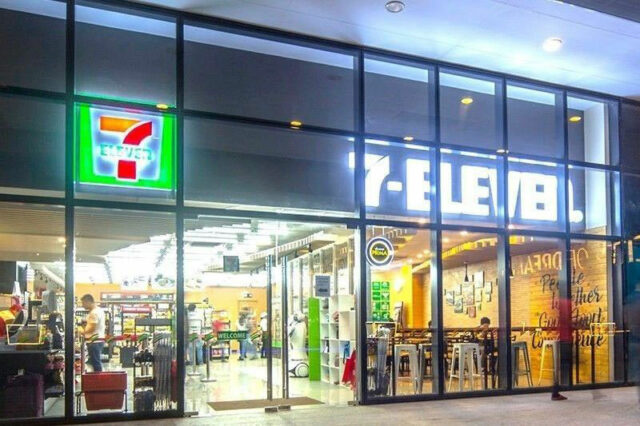THE CULMINATION of Happy Living’s 30th anniversary came on June 15 with their biggest event to date, a wine festival entitled “A Continuing Journey Across the World’s Most Famous Wine Regions and Wineries.”
This milestone event was held at The Tent at Enderun, McKinley Hill, Taguig and featured all of Happy Living’s portfolio that boasts of over 150 brands of wines and other libation drinks from over 50 suppliers around the world.
ABOUT HAPPY LIVING
Happy Living Philippines Corp. started out as a small family business importing premium quality Californian wines in 1994. Some of their earliest brands included Beringer, Chateau Montelena, Freeman Abbey, and Joseph Phelps — all of which remain in their portfolio today.
In the mid-1990s, Happy Living helped introduced the finest Californian wines to the country — before them, locally available California wines were just cheap, low-quality jug wines that included the still best-selling Carlo Rossi, plus others like Paul Masson, Almaden, Franzia and the old Inglenook generic wines.
Today, the Happy Living portfolio goes way beyond just Californian wines and includes wines from Australia, France and Chile among others.
In 2018, the company changed to new ownership and management, led by Managing Director Griffith Go and General Manager Julian Gagliardi.
MEET THE GM
I met the affable, yet confident Frenchman, Julian Gagliardi, way back in 2013 when he was still working for The Straits Wine Co. in their main Singapore hub. At that time, I was doing regional wine consultancy for an iconic Spanish winery from Rioja. The importer of this Rioja brand in Singapore at that time was The Straits Wine Co.
A few years later, I found out that Julian was assigned to their Philippine branch in Makati. He was then just in his late 20s, but even back then I knew he was someone to reckon with in the local wine industry as he was quite visible in the trade. And Julian surely did become someone to reckon with as he moved to and became the GM of the Happy Living “reboot” of 2018.
To say that Julian has lived a colorful life thus far is an understatement.
He started out as a young French boxer who traveled to Mexico to improve his boxing skills. He enrolled at the famed Marquez Boxing Gym where the legendary Marquez boxing brothers — three-division world champion Juan Manuel Marquez, best remembered as the biggest nemesis of our people’s champ Manny Pacquiao, and his younger brother two-division world champion Rafael Marquez — came from.
But this trip of over 9,000 kilometers from his homeland France to Mexico had two purposes as Julian was then concurrently studying for a masteral degree in International Management with Focus on Latin America at the Universidad Nacional Autonoma de Mexico or UNAM — so he was hitting two birds with one stone. Part of completing his UNAM masteral degree was a 10-month internship in Brazil, so Julian was once again on the move.
After this stint in Brazil, Julian had a change of heart about boxing and now wanted to be involved in the food and wine business. At that point he was already fluent in Spanish and Portuguese, on top of his mother tongue French, but he spoke no English at all.
He happened to have a cousin who lived in Singapore, so he set his sights on his new adventure here in Southeast Asia. Within three days upon arrival in Singapore, he found a job with The Straits Wine Co., where he was assigned to their back end, mainly in purchasing. Because Julian is French and can also communicate in Spanish and Portuguese, and since many of The Straits suppliers were French and Spanish speakers, it was not difficult for Julian to adapt immediately to his new role.
And as quickly as he picked up Spanish and Portuguese, Julian’s English also improved, and luckily without the Singlish accent.
Julian was dealing with over 300 wineries from around the world as a purchaser — a great start on his path to the wine industry.
As can be seen from the rapid increase in their portfolio, Julian has made his mark all over the present direction of Happy Living. In his last 10 years in the Philippines, Julian has slowly carved his name in the local wine industry.
On-premise accounts distribution in hotels and restaurants — simply known as on-premise accounts — is where Happy Living has thrived and this is where they get over 50% of their revenue. But as every wine importer in this industry knows, on-premise can be one of toughest channels to manage. It is a “dog eat dog” world in this channel, as most wine importers are not big enough to invest in retail listing fees, with the running rate being at P5,000/SKU per store, so you will find every wine importer competing in this channel.
Also, during the height of the COVID pandemic, several on-premise establishments closed down, and many bad debts were incurred among wine suppliers.
Yet for Julian and Happy Living, there were opportunities to be made, and they seized the moment when, towards the last quarter of 2020, many on-premise accounts re-opened and a lot of them were looking for wine suppliers who could service their needs.
I remembered that during those days — including from my personal experience — the wine industry was in shambles as even within Metro Manila, the different local city governments had different protocol procedures on social distancing, curfews, and even alcohol selling that affected the overall wine business. But as Julian proudly stated, Happy Living was able to fill in the gaps left by other wine suppliers, as they were able to service these on-premise accounts, especially big hotels that badly needed wines to resume their F&B operations.
Being strategically located in Makati also helped their cause, as Makati City was one of the first local governments to open up after the COVID scare started fading.
MOVING FORWARD
When asked what is in store for Happy Living, Julian just mentioned that they live by three principles: 1.) To pay tribute to their past legacy, respecting what the original owners had started; 2.) Embrace the current and adapt to the challenges at present; and, 3.) Look and prepare for the future.
These may be general statements, but Julian emphatically mentioned service. Service translates to giving clients the right products, at the right prices, at the right time.
Choosing Enderun, a hospitality school, as the venue for their 30th anniversary event, was also part of the Happy Living credo — to educate the new breed of hospitality practitioners. Surely, these practitioners will eventually be managing on-premise accounts, whether as owners or employees, and Happy Living will be there more than happy to service these accounts.
RECOMMENDED WINES
When I asked Julian what he feels are the best wines in their portfolio to recommend, he quickly replied, in true French fashion: “Bordeaux second or third labels from Grand Cru classified Chateaux, like the Aspirant de Beychevelle (the 3rd label of 4th growth Chateau Beychevelle in St-Julien region), and Labastide Dauzac (the 2nd label of 5th growth Chateau Dauzac in Margaux region). Bordeaux is the only region in the world that has wines that are of great quality and age very well. No other region in the world can have these types of quality and age-ability at the mid P2,000.00 range.” Amen to that, Julian.
To get to know more about Happy Living, visit their website at https://www.happylivingph.com/.
Sherwin A. Lao is the first Filipino wine writer member of both the Bordeaux-based Federation Internationale des Journalists et Ecrivains du Vin et des Spiritueux (FIJEV) and the UK-based Circle of Wine Writers (CWW). For comments, inquiries, wine event coverage, wine consultancy and other wine related concerns, e-mail the author at wineprotege@gmail.com, or check his wine training website https://thewinetrainingcamp.wordpress.com/services/.












